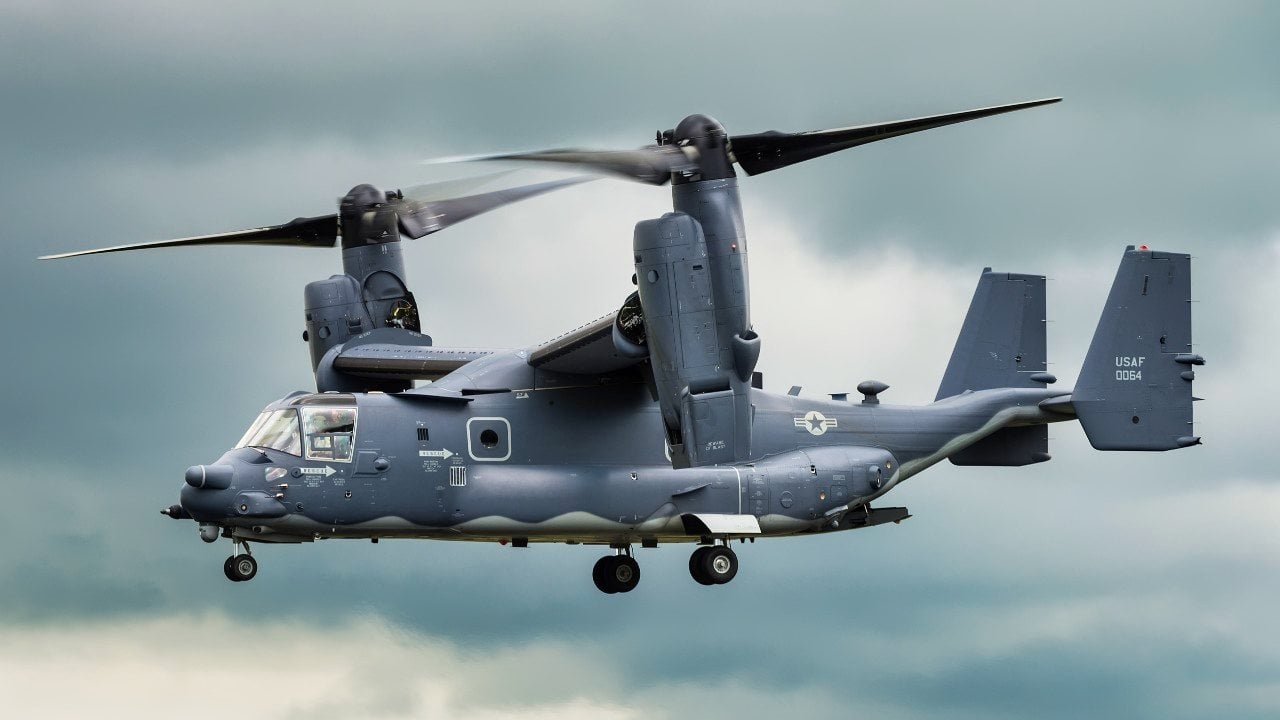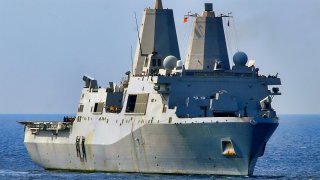Forget Aircraft Carriers: San Antonio-Class Might Be the Navy's Most Vital Warship
The San Antonio-class amphibious ships are vital assets for the U.S. Navy, particularly in potential conflicts involving China in the Pacific. These ships support rapid troop deployment with advanced features like a well deck for landing craft, flight decks for vertical lift aircraft, and sophisticated C4I systems for joint operations.
The Navy's Vital Warship: The San Antonio-class amphibious ships are vital assets for the U.S. Navy, particularly in potential conflicts involving China in the Pacific.
What It Can Do: These ships support rapid troop deployment with advanced features like a well deck for landing craft, flight decks for vertical lift aircraft, and sophisticated C4I systems for joint operations.
Key Point: Capable of carrying up to 800 troops, they extend the Navy’s operational reach and serve as mobile command centers.
Bottomline: Despite initial design challenges, the importance of these ships in modern amphibious warfare is clear, though the Navy currently lacks sufficient numbers to fully meet strategic needs.
The Importance of the San Antonio-class Amphibious Lander
In 2006, the U.S. Navy commissioned its first San Antonio-class amphibious ship. The class was meant to replace various older classes of amphibious ships. The Navy hoped to streamline its amphibious landing capabilities, making it more prepared for the unique demands of the 21st-century battlefield.
As various near-peer competitors arise, notably China, amphibious landers will be a crucial asset in any potential fight. Yet the Navy doesn’t have enough of these pivotal boats, and it is unlikely to get the numbers it needs anytime soon.
A Critical Asset
These boats, as their name suggests, are designed to land U.S. Marines on enemy shores during the crucible of combat. Given the geography of the Pacific, any fight with China would likely involve the need to move large numbers of ground forces across the vast Pacific Ocean onto contested territories close to China’s shores.
That’s why the San Antonio-class amphibious lander is such an important boat.
It has unique features. Its well deck allows for the launch and recovery of landing craft such as the LCAC (Landing Craft, Air Cushion) as well as conventional landing craft, facilitating rapid troop and vehicle deployment directly onto beaches and docks.
These boats have flight decks and hangars that operate the MV-22 Osprey as well as an assortment of helicopters. Vertical lift capability is crucial to modern amphibious assaults. Flexibility and speed are the most important elements of amphibious landings in the modern era.
Further, the San Antonio class comes equipped with advanced Command, Control, Communications, Computers, and Intelligence (C4I) systems. These ships can thus serve as command centers for amphibious assault operations and integrate seamlessly with other naval and joint forces.
What’s more, they can carry up to 800 troops, as well as their equipment, showcasing their role not just as transports but as mobile bases for Marine operations. To better protect these assets, the San Antonio class comes equipped with defensive systems such as the Rolling Airframe Missile and 30 mm guns.
A Key Force Multiplier
San Antonio-class amphibious landers serve significant tactical and strategic roles for the fleet. Not only do they conduct amphibious landings, but they allow for the rapid deployment of large numbers of personnel, vehicles, and supplies during the various disaster-relief missions the Navy routinely undertakes.
These boats also extend the Navy’s reach, massively boosting the Navy’s capabilities for long-range operations in conditions where ordinary infrastructure that would support a fleet or a disaster relief force are nonexistent.
Thanks to the aforementioned C4I systems, these boats serve as excellent joint operations command centers. The idea of jointness among the various branches of the military has been a key element of U.S. military planning for several decades. Because the U.S. military is an all-volunteer force and accounts for barely 1% of the overall U.S. population, technology serves as a vital force multiplier.

Problems Abound
The branches must work seamlessly together as a single, united entity. Having joint coordination and command capabilities of the kind that the San Antonio class affords the Navy allows for this jointness to occur.
Unfortunately, the San Antonio-class amphibious landers have not had an easy go. The initial ships of the class experienced design complications and construction delays. Overall, the most recent models in this class have overcome these problems, but if a war with China erupted, the Americans still lack sufficient numbers of these boats.
Defense News reported earlier this year that, until very recently, the Pentagon was doing its best to scale down the ship’s design or not buy new models of the boat at all. This, of course, would have been a disaster for the Navy given the rise of China.
Clearly, the Navy recognizes the importance of these boats.
Author Experience and Expertise: Brandon J. Weichert
Brandon J. Weichert, a National Interest national security analyst, is a former Congressional staffer and geopolitical analyst who is a contributor at The Washington Times, the Asia Times, and The-Pipeline. He is the author of Winning Space: How America Remains a Superpower, Biohacked: China’s Race to Control Life, and The Shadow War: Iran’s Quest for Supremacy. His next book, A Disaster of Our Own Making: How the West Lost Ukraine, is due October 22 from Encounter Books. Weichert can be followed via Twitter @WeTheBrandon.
All images are Creative Commons or Shutterstock.
From the Vault
Russia Freaked Out: Why the U.S. Navy 'Unretired' the Iowa-Class Battleships
Battleship vs. Battlecruiser: Iowa-Class vs. Russia's Kirov-Class (Who Wins?)


